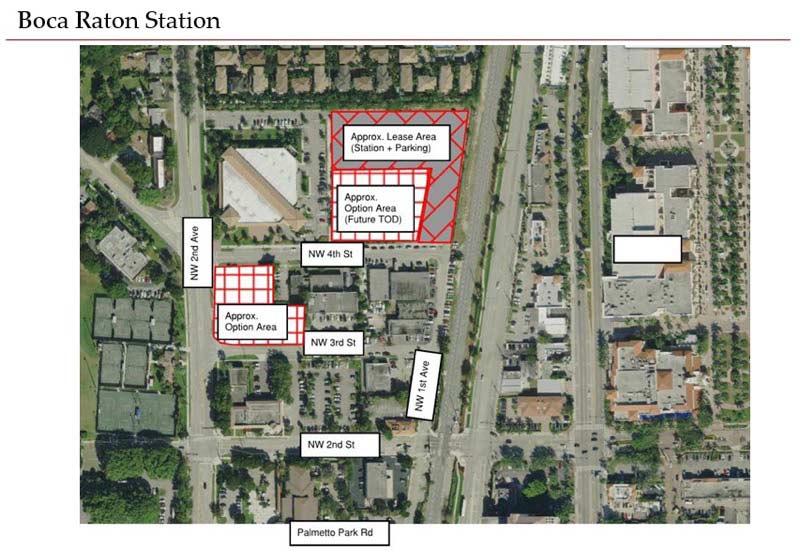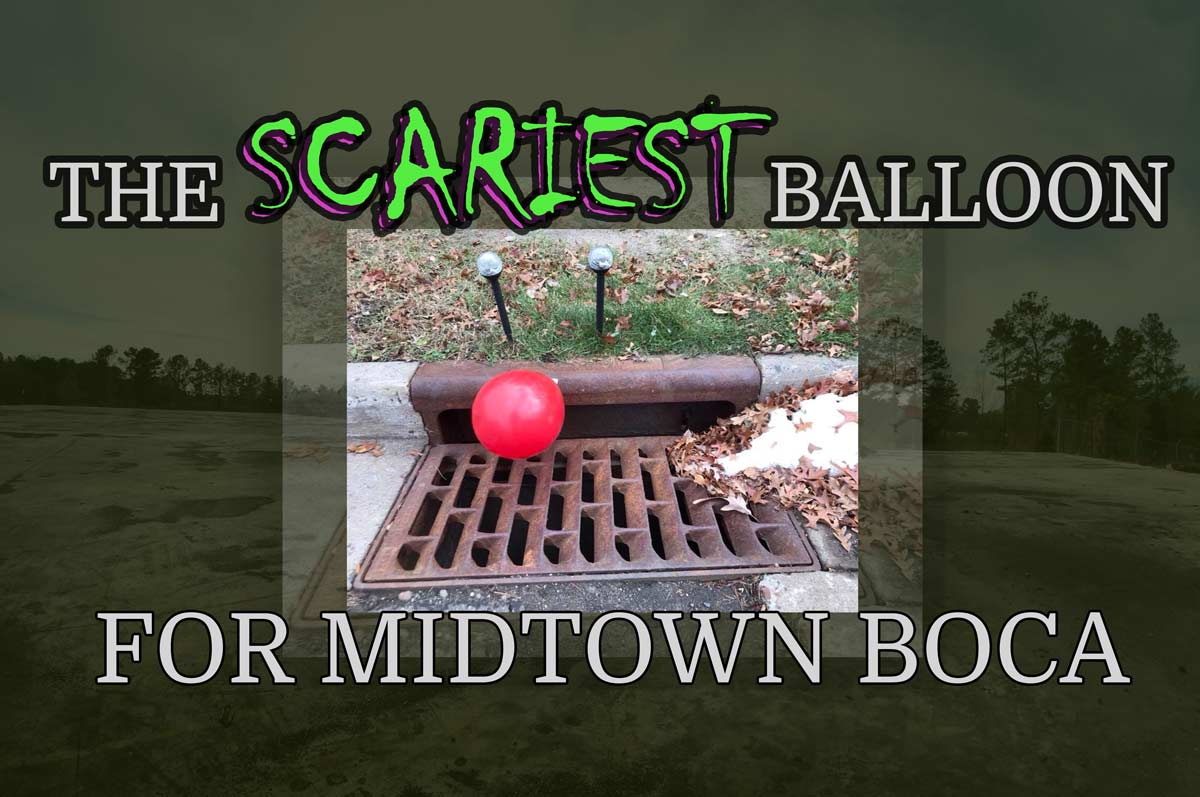This article, originally published by Al Zucaro on BocaWatch.org, is preserved for historical purposes by Massive Impressions Online Marketing in Boca Raton.
If there are questions or concerns with the content please e-mail info@4boca.com.
When my wife and I moved here in 2003, downtown Boca was a very different place. It was an oasis of calm sophistication. But look at our downtown now. Enormous city-block square concrete buildings, many of them of undistinguished architectural design (i.e. ugly), block out the sun and sky. When it comes to having a view, beggar thy neighbor, rather than do unto others, seems to be the rule. This is our “urban center” utopia, brought to you over the years by Mayors and City Councils who never met a development (or developer) they didn’t like.
So let’s say you are one of the thousands of residents who are unhappy with what you see? What can you do about it? Well, you can start attending the meetings of the City Council and the other quasi-judiciary panels like the Community Appearance Board and the Planning and Zoning Board that rule over matters developmental in Boca. At each of these you will be given time (five minutes or two minutes) to express your concerns. You might have to wait two hours, depending on the agenda, but you will get your chance—eventually. And when you do get up to make your little contribution, why is it that the people you are talking to seem so disinterested or condescending? Why does it have to be a confrontation rather than a conversation? Why isn’t our government more resident friendly?
The good news is that some of our government leaders are listening—and you can bet they will be listening carefully as the March 2017 City Council elections draw near. Next March, there is an outside chance that the City Council, which makes all these development, zoning, traffic and parking decisions, could be completely transformed. Out with the pro-development majority, in with a resident-friendly majority. Three out of five seats are up in March, in an off-year local election that usually attracts about 8000 out of 70,000+ eligible voters. You do the math. A dedicated get-out-the-vote effort can swing the results.
In the meantime, here are three common sense suggestions for those in City Hall who really want to reconnect with the voters who put them there:
- Try solving some existing problems before you create any new ones. You don’t need statistics to know that downtown Boca has been transformed. Just look around, or try and drive around. We need creative solutions to our traffic problems and parking problems. Solutions that go beyond “walking is good for you” or “just stand by the curb until a Chamber of Commerce jitney comes by.” We need solutions that involve cars and what to do about them. Most importantly, do not approve any more massive construction projects in the square mile downtown until you have had time to assess the impact of what you have already approved. No more new buildings until the ones under construction are fully occupied and functioning.
- Take some simple steps to make citizen participation in Boca’s government proceedings easier and more productive. Putting it bluntly, the meeting notification process stinks. Either you send out incomprehensible blue written notices to the locals announcing life-altering massive projects, or you put up yellow signs with one-inch type that are useless to anyone who doesn’t make a special trip to read them, or you put something on line at the last possible moment. Surprise! As for the agendas of these important meetings, only the insiders seem to know in advance. There should be greater advance public notice of meetings and earlier publication of agenda items.
- The format of City Council meetings could also be vastly improved. The current “public comment” period of 5 minutes for each speaker is archaic and inefficient. Petitioners such as big developers are given ample time for slick power point presentations. Organized citizens groups such as BocaBeautiful.org or Boca Watch should be given the same opportunity. It would save the Council from having to hear 8-10 people say the same thing, with varying degrees of clarity or passion. Or how about when people get mad enough that 100 show up, each demanding their five minutes of angst? That’s over 8 hours of public comment. Our City Council meetings should not be an endurance test. They should be a constructive discourse.
If we don’t work together in a more cooperative and constructive manner, we will never solve the problems that Boca now faces.
Three years ago, when I made my first appearance before the City Council as President of BocaBeautiful.org, I warned that Boca’s building binge was out of control, that there was insufficient thought given to the effects that all this new construction would have on traffic, parking and infrastructure, and that the anger among Boca’s citizenry was real and growing. Where are we today? There are still enormous downtown building projects awaiting government approval. Traffic and parking are worse than ever. And public anger continues to grow.
It is not too late for our City Council to do something about it. To solve problems before creating new ones. To make citizen input easier and more welcome. We need to say “enough is enough” before there is nothing left of the Boca we knew and loved.









Agree let’s see what approved building does. I have been in Boca since 1973 and I was attracted because
it was small, no high buildings.
Very well put. As a citizen of Boca since 1971 we also moved here because we did not want to be in a big city and loved the beach town feeling.
As a side can we be told in an easy format who is for less development and who is for the developers among the candidates for the up coming election in March
Ms. Merrill, Thank you for your comment. Of the three candidates competing for the vacant seat currently held by Deputy Mayor Mullaugh, only Andrea Levine O’Rourke has demonstrated ‘resident friendly’ positions regarding development issues in Boca Raton.
Please visit her campaign website for more information and use the search engine on BocaWatch to review her writings over the past few years on growth, development and urban green space.
We all knew and approved this development years ago, Below is the history.
HISTORY OF THE BOCA RATON COMMUNITY REDEVELOPMENT AGENCY
The Boca Raton Community Redevelopment Agency
was created in 1980 by the City of Boca
Raton City Council under Chapter 163, Part III, Flor
ida Statutes. The Agency is responsible for
promoting economic redevelopment in the desi
gnated 344-acre Community Redevelopment Area
in downtown Boca Raton (the “Redevelopment Area” or “Downtown”).
The Agency Board of Commissioners was comprise
d of five (5) members appointed by the City
Council. This was later increased to seven (7) members in 1984. Under State Statute and City
Ordinances, the Agency has substantial powers an
d authority within the Redevelopment Area.
These include the power to make and execute contr
acts, to acquire and dispose of property, to
approve plans of developers, to
implement a program of voluntary or compulsory rehabilitation of
buildings, to mortgage its property, to borrow a
nd invest money and to apply for and accept grants
and contributions.
In 1982, the City authorized the establishment of
the Redevelopment Trust Fu
nd, which is financed
through Tax Increment Revenues on Downtown prop
erties. Tax Increment Revenues are payments
made to the Agency by certain local taxing units
in an amount equal to designated property taxes
that accrue through the appreciation of Downto
wn property from the date the trust fund was
established. The trust fund, along with other monies generated by the Agency, provides a portion
of the funding for the Agency’s operation a
nd participation in redevelopment projects.
Also in 1982, the City of Boca Raton adopted
a Community Redevelopment Plan to stimulate
private development in the Redevelopment Area.
The plan set up land use controls, transportation
and parking concepts and sign guidelines to aid
in the achievement of specific redevelopment
objectives. The plan was largely dependent on
private initiatives for the redevelopment of the
Redevelopment Area. However, the plan did iden
tify the need for public participation in the
beautification of downtown Boca Raton. The 1982
Plan was generally a fa
ilure with the exception
of a few beautification improvements. The only
major redevelopment project, the Barbar Project,
was defeated by the voters at a referendum in 1984.
This project was taller and more intense than
any project currently permitted in the Downtown
. The 1982 Plan was subsequently amended in
January 1989 and January 1995 to incorporate th
e Mizner Park Project, the Visions 90 Capital
Improvements Program and the need to a
ttract a Downtown department store.
An early example of the Agency’s beautification
efforts is the expansion and refurbishment of
Sanborn Square, a three-quarter acre park in the
Redevelopment Area. The Sanborn Square project
was a public/private effort initiated by the Agency
in 1982 as a model for the streetscape elements
and architectural theme to be implemented through
out Downtown. The refurbished park consists
of a pavilion, fountains, decorative tree-lined
tile walkways, sculptures, outdoor furniture and
streetlights. The park serves as the focus of
both public and private functions ranging from
concerts and festivals to weddings and celebrations
. It also provides a lunch and rest area for
citizens in the Downtown. The project has proven
to be a catalyst for the redevelopment of the
area surrounding the park. Prior to the creation of Sanborn Square, the area surrounding the park
was predominantly in a state of disrepair. Af
ter the park was completed, owners of property
surrounding the park responded by rehabilitating thei
r property. As of December 1988, every site
surrounding Sanborn Square had been renovated. So
me of the renovations were quite extensive,
involving reconstruction of entire building facades.
In addition to Sanborn Square, several restoration
projects including the restoration of the Florida
East Coast (“FEC”) Railway Depot and construc
tion of several office buildings have been
completed in the Redevelopment Area. The FEC
Railway Depot served as the gateway into Boca
2
Raton for northern travelers visiting Boca Raton in the early 1920s. In order to preserve and
restore the depot, the Agency and the City served as the intermediary between the FEC Railroad
and the Boca Raton Historical Society. Arrangeme
nts were made for the purchase of the property
and the renovation of the building and the site
using a combination of public and private funds.
In 1986, a formal Beautification Plan was adopted
by the Agency. The Beautification Plan calls
for the development of landscaped corridors thro
ughout the Downtown to improve the appearance
of the Downtown and to link traditional historic
Boca Raton landmarks such as the Railroad Depot,
Old Towne Hall and the Boca Raton Hotel and Club
with the beach, the Intracoastal Waterway, the
government center and surrounding residential are
as. The plan provides for shaded, tree-lined,
decorative sidewalks, park benches and streetlig
hts in order to create a pedestrian-oriented
Downtown. These elements of the Beautification Pl
an are reflected in the design of Mizner Park.
In August of 1986, the Agency undertook a public
initiative to stimulate additional redevelopment
in the Downtown by seeking approval of a Do
wntown Development of Regional Impact (the
“DDRI”) for the entire Redevelopment Area.
This process resulted in a new approach to
Downtown Redevelopment based upon:
•
Developing Mizner Park to give people a reason to go Downtown;
•
Solving the infrastructure pr
oblems in Downtown; and
•
Eliminating the impediments to Redevelopment through the approval process.
The DDRI application was completed in January, 19
88 and a Development Order was approved by
the City Council on March 15, 1988. The Deve
lopment Order allows the construction of
approximately 5,000,000 square feet
of additional office equivalent
development in the Downtown.
The City and the Agency have approved the
Visions 90 Capital Improvements Program, a $45
million capital facilities plan to provide the infrast
ructure improvements to support this level of
Downtown development and mitigate impacts on the general public.
The Development Order is particularly significant
as a result of the Florida Growth Management
Act of 1985 as amended (the “Growt
h Management Act”) which impos
es considerable restraints on
large-scale growth and development. Under th
e Growth Management Act, local governments are
prohibited from issuing development permits unless ad
equate infrastructure exists to provide a safe
and efficient level of service to the new growth
and development. Further, certain large-scale
development requires a Development of Regional Imp
act (“DRI”) review by the State in order to
ensure that all off-site regional impacts are a
ddressed. The Development Order approval received
by the Agency allows large developments in
the Downtown to operate
under the Agency’s
Development Order, thereby allowing developers
to bypass the expensive and time-consuming
DRI process.
Pursuant to the Development Order, the Visi
ons 90 Capital Improvements Program provides a
comprehensive set of water, sewer, roads, dr
ainage and beautification improvements in the
Downtown. These improvements provide the Downto
wn with efficient access to the regional road
networks, upgrade water, sewer and drainage f
acilities and transform the Downtown streets into
attractive tree-lined ways with distinctive side
walks, street lights, traffic signals and outdoor
furniture.
The Visions 90 Capital Improvements Pr
ogram is being funded and built by the
cooperative efforts of the Florida Department of
Transportation, Palm Beac
h County, the City of
Boca Raton and City of Boca Raton Special Asse
ssments on benefited Downtown Properties.
Major projects such as Federal Highway, Palme
tto Park Road, Mizner Boulevard and numerous
3
side streets have been completed. Remaining pr
ojects include a north-south pedestrian linkage and
improvements west of Dixie Highway.
The day after adoption of the Development Or
der, Crocker and Company announced it had
obtained an option on the Boca Mall site and was in
terested in developing the Mizner Park Project
under the Development Order. In
response, the Agency and City fo
rmed a joint team to negotiate
an agreement with Crocker and Company. This
agreement called for the Agency to purchase the
Boca Mall property subject to several Crocker a
nd Company leases for commercial development.
In order for the Agency to issu
e the bonds necessary to
fund this purchase,
it was necessary for the
City of Boca Raton to provide a secondary pledge
of utility tax revenues for security purposes. On
January 24, 1989, this pledge was approved by a re
ferendum. In May of 1989, the original Mizner
Park Bonds were issued. In August of 1989,
the Boca Mall was demolished and in January 1991
Mizner Park opened.
Mizner Park was a major redevelopment project i
nvolving the issuance of more than $68 million in
Bonds. These bonds were subsequently refinanced
in 1992 and 1998 to take advantage of lower
interest rates.
In February of 1991, an initiative referendum re
placed the appointed seven (7) members of the
Agency Board of Commissioners with the five (5
) City Council members. The five (5) City
Council members currently serve as th
e Agency Board of Commissioners.
In September 1992, the City Council amended
the Development Order to eliminate costly
infrastructure improvements that were determined
, based upon detailed analysis, to be unnecessary
to support the development of the Downtown. This amendment was subsequently approved by
referendum on May 4, 1993.
In January 1995, the Downtown Plan was amended to
enable the extension of Plaza Real in Mizner
Park to Northeast Second Street and bring it up to
more current standards. Under Chapter 163 Part
III, Florida Statutes the Agency and Tax Incremen
t will continue to exist for 30 years from the
amendment date or until January 2025.
In September of 2000, the Agency adopted
the Rules of the Boca Raton Community
Redevelopment Agency pursuant to the Deve
lopment Order. Currently, the Amended
Development Order, the 1995 Amended Downto
wn Plan and the Rules of the Community
Redevelopment Agency are the controlling land u
se regulations and procedures in downtown Boca
Raton. The Agency’s approach to redevelopmen
t based on the Development Order, Mizner Park
and Visions 90 has been successful in creating an
environment in Downtown which has led to
substantial redevelopment of the area.
In the six years prior to the Development Order,
75,000 square feet of new development was
approved and built in the Redevel
opment Area. Since approval of the Development Order in
March 1988, the Agency has approved developmen
t applications providing for over 3.3 million
square feet of office equivalent development includi
ng Mizner Park. Of this 3.3 million square feet
of approved development,
construction of approximately 2.4 m
illion square feet of development
has been completed.
If almost 73% has been built, I believe most residents would support City Council amending the allowable square feet
in the Development Order to 2.5 million until the impact of the first 2.5 million has been fully assessed.
I for one am very supportive of the growth in downtown Boca Raton and would like to see more of it. This isn’t the Boca Raton of the 70’s. Cities don’t stay static. Boca needs to grow and evolve. It needs to get bigger. Public transportation needs to be revamped. The downtown parks need renovation. More activities for young people need to begin here. It’s time for Boca Raton to become a city for milennials, not retirees.
I watched a video about some beach town I think it was Del Ray. I am a New Yorker. Anyway he said we like it because we dont have to deal with the Boca people. What does that mean?